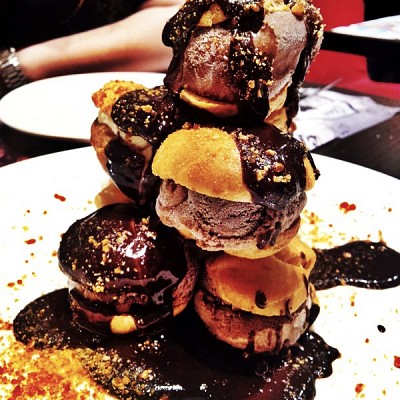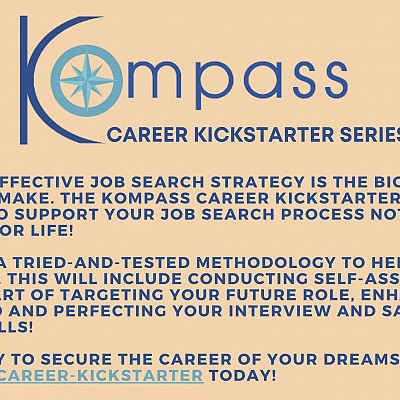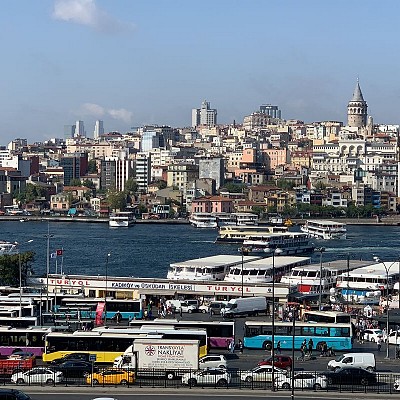The COVID-19 pandemic affected multiple industries with supply chain shortages. However, the restaurant field was among the hardest hit and many are still reeling. New establishments arise, but lingering problems mean they must also learn to cope with supply chain disruptions.
What should you do if you own such an establishment? Here’s how restaurants are handling supply chain shortages.
What Causes Supply Chain Shortages?
Restaurant owners face multiple causes of supply chain shortages. Some of them are beyond their control, like natural disasters or pandemics.
There’s not much a restaurateur can do to safeguard against an earthquake destroying their establishment or government regulations shuttering it, minus carrying adequate insurance. However, they can influence the following factors.
1. Cyberattacks
Most restaurateurs handle inventory via computer. Cyberattacks do more than expose sensitive banking information — they can also crash your system, leading to supply chain shortages when you don’t order what you need. Ensure you update your electronics with the latest antimalware coverage and regularly run system updates to prevent known threats.
2. Price Wars
As an industry leader, you influence prices directly and indirectly. You control what you charge per plate and may need to adjust your pricing to reflect current costs. However, you can also keep suppliers on their toes by continuing to research the lowest prices instead of automatically relying on your favorites.
3. Aging Infrastructure
Your restaurant can’t order highway repairs. However, you can partner with suppliers who keep their fleets up to date. Aging trucks are more prone to breakdowns that contribute to supply-chain issues. Partnering with fleet brokerage services that use the latest technology can minimize problems and stress.
8 Ways Restaurants Can Handle Supply Chain Issues
Even if you take the precautions above, factors beyond your control can lead to supply chain shortages. What should you do once they arise? Here are eight strategies.
1. Local Sourcing
Eating local is a hot trend — 70% of professional chefs note its popularity across menus. It’s also one of the best ways to handle supply chain issues and green your carbon footprint.
Goods shipped locally travel shorter distances, resulting in fewer emissions. Furthermore, there’s less chance of anything going wrong along the way.
2. Improved Telemetrics
What is telemetrics? It refers to using GPS technology to facilitate transportation and diagnose multiple issues with a vehicle, from how often and hard it brakes to its average speed. For example, using a dashcam to reconstruct an accident or a plug-in device to monitor your driving habits are examples of telemetrics in action.
Improving these systems enhances safety. It also alerts truck drivers to hazardous road conditions and vehicle problems that can cause shipping snafus. Quickly identifying and addressing potential issues eases supply chain shortages.
3. Portions and Proportions
Restaurants are famous for epic portion sizes. However, you might not need to stuff your patrons. For example, the typical serving size of pasta takes up roughly the same space as your closed fist. Filling the bowl to the brim encourages food waste, contributing to climate change. It also leaves you needing more supplies.
However, you might have built your business model on portion size. In that case, can you alter the proportions of some items on your plate? Perhaps you could add an extra slab of cod with your fish and chips during a potato shortage or increase the fresh, locally grown veggies ratio on each plate. You’ll improve diner health while still providing the visual appeal of a brimming platter.
4. Communicate With Suppliers
Many suppliers will alert you to issues. However, they’re also busy business owners, so be proactive about communication. Speak with your suppliers regularly, inquiring about potential upcoming shortages. Getting the inside scoop could help you modify your menu in time to account for the lack of fresh oranges.
5. Evaluate Customer Expectations
What do your customers value most? For example, one restaurateur who experimented with smaller portions to deal with a supply chain issue discovered his process backfired. When he asked his customers what they wanted, they indicated a willingness to pay higher prices for more food and he adjusted his menu accordingly.
Customer surveys are your friends. You can use them to determine what new services or menu items to offer, and which ones they can do without, trimming your supply needs.
6. Keep Your Menu Small
Huge menus don’t impress anyone. Chefs hate them because perfecting three or four pages of dishes is impossible. Customers know this and expect lower prices to justify the decreased food quality.
Keep your menu to a single page, two max. Instead of quantity, focus on unique signature dishes your patrons can’t find anywhere else.
7. Increase Takeout and Delivery Options
Takeout and delivery saved many restaurants during the recent pandemic. They’re helpful during supply chain shortages as it becomes easier to monitor inventory.
Many delivery systems integrate with your existing POS system, or you can find go-between apps to collect ordersfrom UberEats, DoorDash and other popular platforms. Use this technology to update your supply list instantly.
8. Embrace Farm to Table
A farm-to-table restaurant is one where the food on customers’ plates comes from gardens on the site. Few technologies address supply-chain shortages like growing your menu items yourself.
Depending on your facility, you may not have a complete farm-to-table concept complete with livestock on the premises. However, you could grow highly perishable items like salad greens, shaving expenses and preventing you from throwing rotten lettuce in the trash.
Examples of Supply Chain Management in Action
How have other successful restaurateurs handled supply chain shortages and thrived despite them? Check out these inspiring examples and what you can learn from them:
- Kayla Robinson: This executive chef at Arnold’s Bar and Grill in Cincinnati, OH and a Food Network star manages shortages by planning her menu after the delivery truck arrives.
- Jamie Oliver: This owner of several successful restaurants and appearances on the BBC helped people practice self-isolation during the pandemic. He inspired many with his “store cupboard meals” while they were stuck at home.
- Christopher Carraher: This food-and-beverage director for Caesar Entertainment originally wanted to slash the Caesar’s Palace world-famous breakfast buffet offerings. Instead, he listened to customer feedback, increasing prices to preserve quality and selection.
- Andrew Chun: This managing partner of Sidecar Hospitality focused on changing the proportions of various foods on his restaurant’s plates, prominently featuring more readily available items.
Restaurants Are Taking Charge of Supply Chain Shortages
The recent pandemic ushered in supply chain shortages that hurt the restaurant industry, but savvy owners and managers found ways to adapt. The tips above can help your restaurant weather supply chain shortages and thrive. Rising to the challenge may improve your overall processes, making your establishment a better place to work and dine.






































